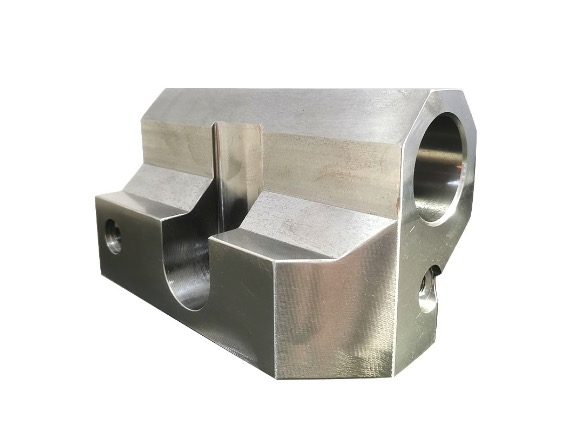- English
- Español
- Português
- русский
- Français
- 日本語
- Deutsch
- tiếng Việt
- Italiano
- Nederlands
- ภาษาไทย
- Polski
- 한국어
- Svenska
- magyar
- Malay
- বাংলা ভাষার
- Dansk
- Suomi
- हिन्दी
- Pilipino
- Türkçe
- Gaeilge
- العربية
- Indonesia
- Norsk
- تمل
- český
- ελληνικά
- український
- Javanese
- فارسی
- தமிழ்
- తెలుగు
- नेपाली
- Burmese
- български
- ລາວ
- Latine
- Қазақша
- Euskal
- Azərbaycan
- Slovenský jazyk
- Македонски
- Lietuvos
- Eesti Keel
- Română
- Slovenski
- मराठी
- Srpski језик
How to troubleshoot noise faults in relief valves?
2025-08-08
As one of the important hydraulic valves in hydraulic system, the relief valve mainly functions to maintain the pressure of the hydraulic system or provide safety protection. It is almost used in all hydraulic systems, and its performance has a significant impact on the normal operation of the entire hydraulic system.

The factors causing noise in relief valves
During the operation of relief valves, common faults include noise, vibration, radial jamming of the valve core and pressure regulation failure, etc. Noise faults are the ones that need to be eliminated first.
The components that are prone to generating noise in hydraulic devices are generally considered to be pumps and valves, among which relief valves and solenoid directional control valves are the main ones. There are many factors that generate noise. The noise of the relief valve can be divided into two types: flow velocity sound and mechanical sound. The noise in flow velocity sound is mainly generated by reasons such as oil vibration, cavitation and hydraulic shock. Mechanical noise is mainly generated by the impact and friction of parts in the valve and other reasons.
Measures to reduce or eliminate noise and vibration
Its occurrence rate is related to factors such as the configuration of the return oil pipeline, flow rate, pressure, and oil temperature (viscosity). Under normal circumstances, when the pipe diameter is small, the flow rate is low, the pressure is high, and the viscosity of the oil is low, the occurrence rate of self-excited vibration is high. Measures to reduce or eliminate the noise and vibration of pilot-operated relief valves are generally to install vibration damping elements in the pilot valve section.
The vibration damping sleeve is generally fixed in the front chamber of the pilot valve, that is, in the resonant chamber, and cannot move freely. All the vibration damping sleeves are equipped with various damping holes to increase damping and eliminate vibrations. In addition, due to the addition of parts in the resonant cavity, the volume of the resonant cavity is reduced. When the oil is under negative pressure, its stiffness increases. Based on the principle that components with greater stiffness are less likely to resonate, the possibility of resonance can be reduced.
Vibration damping pads are generally in coordination with the movement of the resonant cavity and can move freely. There is a throttle groove on both the front and back sides of the vibration damping pad. When the oil flows, it can produce a damping effect to change the original flow situation. Due to the addition of the vibration damping pad, an additional vibration element was added, disrupting the original resonant frequency. The resonant cavity has added vibration damping pads, which also reduces the volume and increases the stiffness of the oil under pressure, thereby reducing the possibility of resonance.
The vibration damping screw plug is provided with a small air storage hole and a throttling edge. Due to the presence of air in the small air storage hole, the air is compressed when under pressure. The compressed air has a vibration absorption effect and is equivalent to a miniature vibration absorber. When air is compressed in the small hole, oil is filled in. When it expands, the oil is pushed out. This adds an additional flow to change the original flow situation. Therefore, it can also reduce or eliminate noise and vibration.
In addition, if the relief valve itself is not assembled or used properly, it will also cause vibration and generate noise. For instance, in the case of three-section concentric relief valves, if the concentric fit of the three sections is improper during assembly, if the flow rate is too large or too small during use, or if the cone valve is abnormally worn, etc. In this case, a careful inspection, adjustment or replacement of parts should be carried out.
Conclusion
If a noise fault occurs in the relief valve, the initial step should be to investigate its cause. Subsequently, depending on the various causes identified, the fault can be rectified through methods such as adding vibration damping components, examining and fine-tuning the valve's internal mechanisms, among others.
To bolster the safety and reliability of your hydraulic system, and should you necessitate dependable relief valves or relief valve blocks, please contact us promptly. As a specialist supplier of hydraulic components, we are committed to furnishing you with premium products and services.





